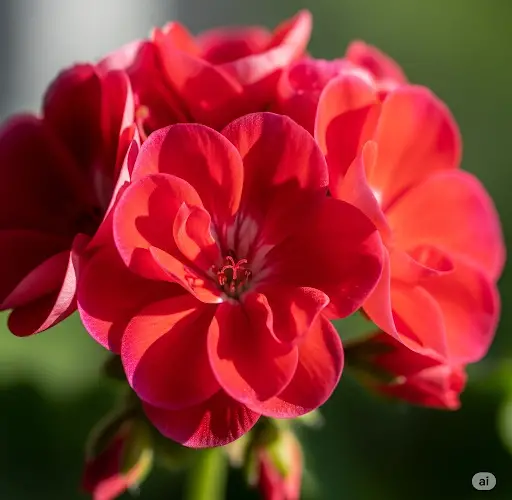Geraniums are cherished by gardeners for their long-lasting blooms, pleasant fragrance, and low-maintenance nature. Whether you’re growing them in pots on a sunny balcony or planting them in garden beds, these flowering favorites can be incredibly rewarding. But even though geraniums are hardy, they do have their limits—and many common care mistakes can significantly affect their health and blooming capacity.
If your geraniums aren’t performing as expected—leaves yellowing, buds dropping, or stems becoming leggy—it may be due to one or more of the following mistakes. Here are 10 things geraniums absolutely dislike, and what you should do instead to help them flourish.
1. Overwatering
Geraniums hate having “wet feet.” Their roots are prone to rot if left in soggy soil for too long. Overwatering is one of the most common causes of yellowing leaves and poor growth.
Solution: Allow the top few centimeters of soil to dry out before watering again. Always ensure pots have good drainage holes and never let water accumulate in saucers.
2. Poor Drainage
Even if you’re watering carefully, if the soil or pot doesn’t allow water to drain, roots can suffocate and rot.
Solution: Use a light, well-draining potting mix, ideally one that includes sand or perlite. Avoid heavy garden soil in containers.
3. Lack of Sunlight
Geraniums are sun lovers. Without enough light, they become leggy and stop producing flowers.
Solution: Place geraniums where they receive at least 5–6 hours of direct sunlight daily. If indoors, choose a bright south- or west-facing window.
4. Excessive Shade
While they can tolerate partial shade, too much can lead to weak growth and few flowers.
Solution: If your geraniums are underperforming in shade, move them to a sunnier location or consider growing shade-tolerant plants in that spot instead.
5. Fertilizing Too Often
Geraniums don’t need frequent feeding. Over-fertilizing, especially with nitrogen-rich formulas, encourages leafy growth at the expense of flowers.
Solution: Use a balanced, diluted liquid fertilizer once every 3–4 weeks during the active growing season. In winter, hold back entirely.
6. Cold Temperatures
Geraniums are not frost-tolerant and can suffer damage if exposed to low temperatures.
Solution: Keep them in a sheltered area if night temperatures drop below 10°C (50°F). Bring potted geraniums indoors during cold seasons.
7. Neglecting Pruning
Without occasional trimming, geraniums can grow tall, spindly, and uneven.
Solution: Pinch off the tops of stems regularly to encourage bushier growth. Remove faded flowers to stimulate new blooming and cut back long stems to maintain shape.
8. Allowing Dead Flowers to Accumulate
Spent flowers left on the plant not only look untidy but also reduce blooming energy.
Solution: Deadhead regularly by snipping off wilted or dry blooms. This redirects energy toward new growth and flowering.
9. Stale or Depleted Soil
Using the same soil for multiple seasons can deprive geraniums of nutrients and good root structure.
Solution: Refresh potting soil annually or at least replace the top few inches with new, fertile mix. Consider repotting every 1–2 years for best results.
10. Ignoring Pest and Disease Signs
Geraniums can fall victim to aphids, spider mites, whiteflies, and fungal diseases if not monitored.
Solution: Inspect plants regularly. Wipe leaves with a damp cloth to remove dust and pests. Use insecticidal soap or neem oil for infestations, and avoid overhead watering to prevent fungal issues.
Bonus Tips to Keep Geraniums Happy
-
Water early in the day to allow moisture to evaporate and prevent rot.
-
Rotate potted plants weekly to encourage even growth.
-
Ensure good airflow around your plants, especially in crowded beds or balconies.
-
Mulch lightly in outdoor beds to retain moisture without compacting the soil.
Conclusion
Understanding what geraniums dislike is just as important as knowing what they love. These bright and cheerful plants are not difficult to care for, but a few wrong moves can quickly turn a healthy plant into a struggling one. By avoiding these ten common mistakes and adjusting your care routine accordingly, you’ll ensure your geraniums reward you with lush growth and continuous blooms all season long.
Whether you’re a seasoned gardener or just getting started, these insights can help you build a healthier relationship with your geraniums—and enjoy the vibrant color they bring to any space.



